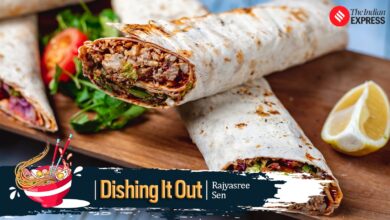Why do we need front of pack food labelling? Because the star rating on it will tell you how healthy the food is

India’s apex food regulator has released a draft notification that will make it mandatory for pre-packaged food items to carry a star rating – just like energy-efficiency ratings on electronic goods – to discourage people from consuming foods high in sugar, salt and fats.
The decision to introduce a front-of-pack label of nutrients in pre-packaged foods comes in the backdrop of increasing incidence of non-communicable diseases.
What is a front-of-pack label and why do we need it?
Any front-of-pack label is supposed to be a graphic or symbol that can provide simplified nutritional information to the consumers, helping them make split-second decisions on which foods to buy. The aim of such labels is to aid consumers make an informed choice, even if they choose to buy high-calorie chips or beverages.
Experts say that such labelling can, in fact, help in reducing the consumption of ultra-processed foods that are high in sugars, salts, and fats. A position paper organisations such as the Public Health Foundation of India, Centre for Science and Environment and Indian Academy of Paediatrics earlier this year found how Chile witnessed a 24 per cent drop in sugary drink consumption with a warning label.
“Although it is mandatory for food packages to carry the nutrition content, it is printed in a very small font at the back of the pack, with most people not even reading it. A front-of-pack label is less likely to be ignored,” said Dr Jugal Kishore, Head of the Department of Community Medicine at Safdarjung Hospital.
Preventing or reducing consumption of foods high in salts, sugars, and fats could help check the increasing burden of non-communicable diseases in the country, with around 60 per cent of all deaths in the country attributable to it.
“Parents will be less likely to give their children Maggie and chips if they see a red warning label on the pack. At present, childhood obesity is a big concern for us as it leads to early onset of lifestyle diseases like diabetes, hypertension and heart attacks. We see people dying at a younger age, in the prime of their lives, because of these diseases in India,” said Dr Suneela Garg, Professor of Community Medicine at Maulana Azad Medical College and advisor to the FOPL groups at AIIMS and National Academy of Medical Sciences.
What are the different types of front-of-pack labels?
There are several ways in which the nutritional information can be provided on the front of a pack:
· Daily Intake Guide — A panel that says what proportion of the daily recommendations of nutrients is present in one serving of the pre-packaged food.
· Nutrition Information Panel – A panel that provides the quantity of each of the main nutrients present in the food.
· Traffic Light Labelling – A panel that not only shows the amount of fats, salt, sugar and other nutrients present in a serving of the packaged food but also colours it red, orange or green based on how healthy it is.
· Warning Label – A colour-coded or written label that shows whether the quantity of salts, sugars and fats is high, without providing any details of the quantities in the food.
· Star rating – A label that provides one to five stars based on how healthy the product is, with five being the healthiest. It doesn’t provide a break-up of the nutrients.
What has the FSSAI recommended in its draft notification?
The country’s apex food regulator – Food Safety and Standards Authority of India (FSSAI) – has proposed a star rating system called the ‘Indian Nutrition Rating (INR)’ where the unhealthiest foods will carry a 0 star rating and the healthiest carry a five star rating, according to the recently released draft notification.
As per the draft notification, items will be given scores based on the contribution of energy and content of saturated fats, sugars, sodium, fruits and vegetables (FV), nuts, legumes, and millets (NLM), dietary fibre, and protein in 100 gms of solid or 100 ml liquid foods. Solid foods with a score of more than 25 will be given 0.5 stars while those with a score less than -11 will be given five stars. Liquid foods with a score of more than 20 points are equivalent to 0.5 stars while those scoring zero are equal to five stars, the notification said.
“The INR system rates the overall nutritional profile for packaged food assigning it a rating from ½ star (least healthy) to five stars (healthiest). More stars indicate that the food product is better positioned to provide for the daily human need of nutrients. The logo shall be displayed close in proximity to the name or brand name of the product on front of pack,” the notification read.
Along with the star, brands might also choose to display the amounts of various nutrients present. However, it is not mandatory, as per the notification.
What do experts say?
Several experts have said that a coloured warning label is likely to work the best in countries like India with limited literacy. They say the star rating could be confusing, with people believing even a product with one star could be good because it has a star.
Dr Garg said, “We need a type of label that can immediately tell people that a food is unhealthy even without reading anything. A traffic light for the various components can achieve that. People will try to go for products that have more green labels.”
She added, “With a star rating, it does not provide the true picture. What is healthy? Should we consider a 3-star to be healthy? If so, a food with high content of say fruits and vegetables or protein but high sugars will also get an average rating and come across as okay.”






